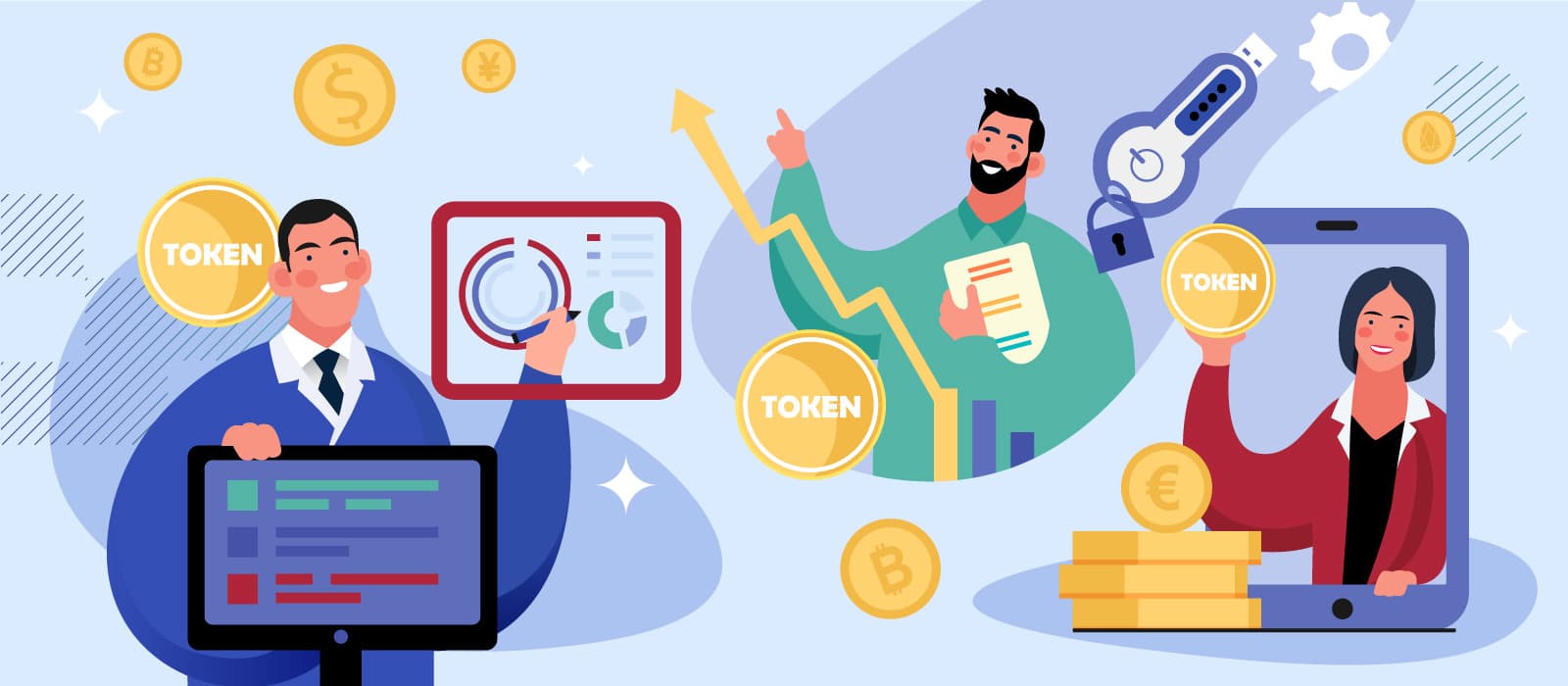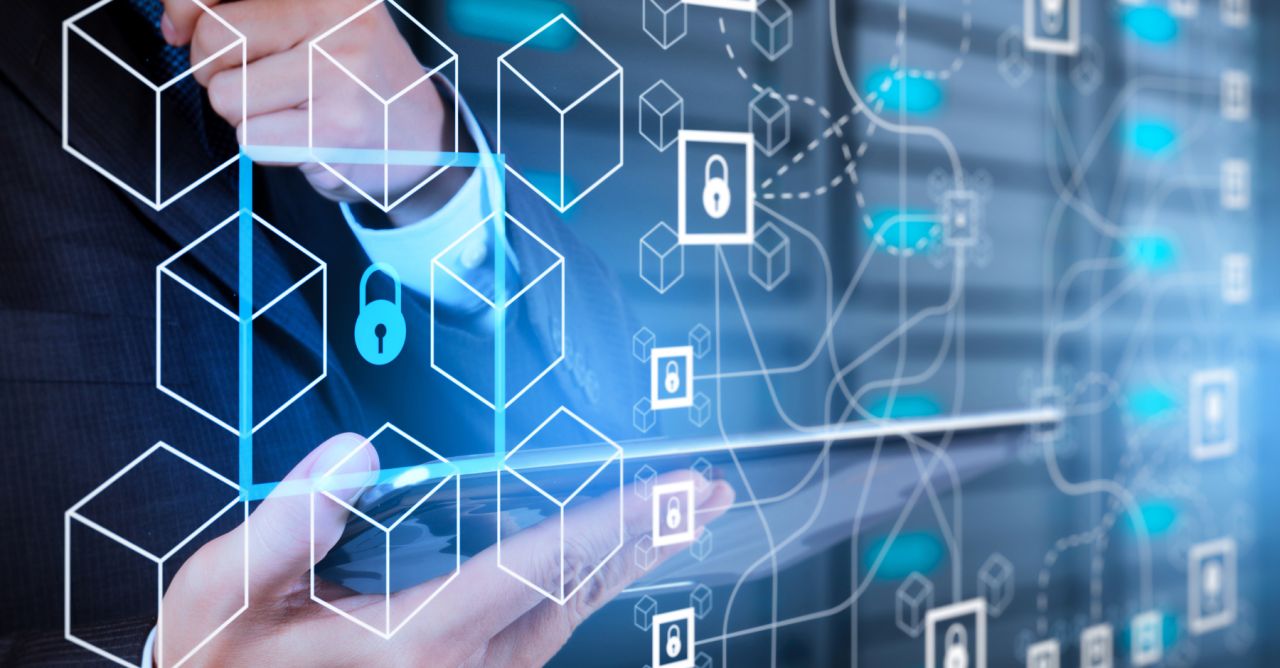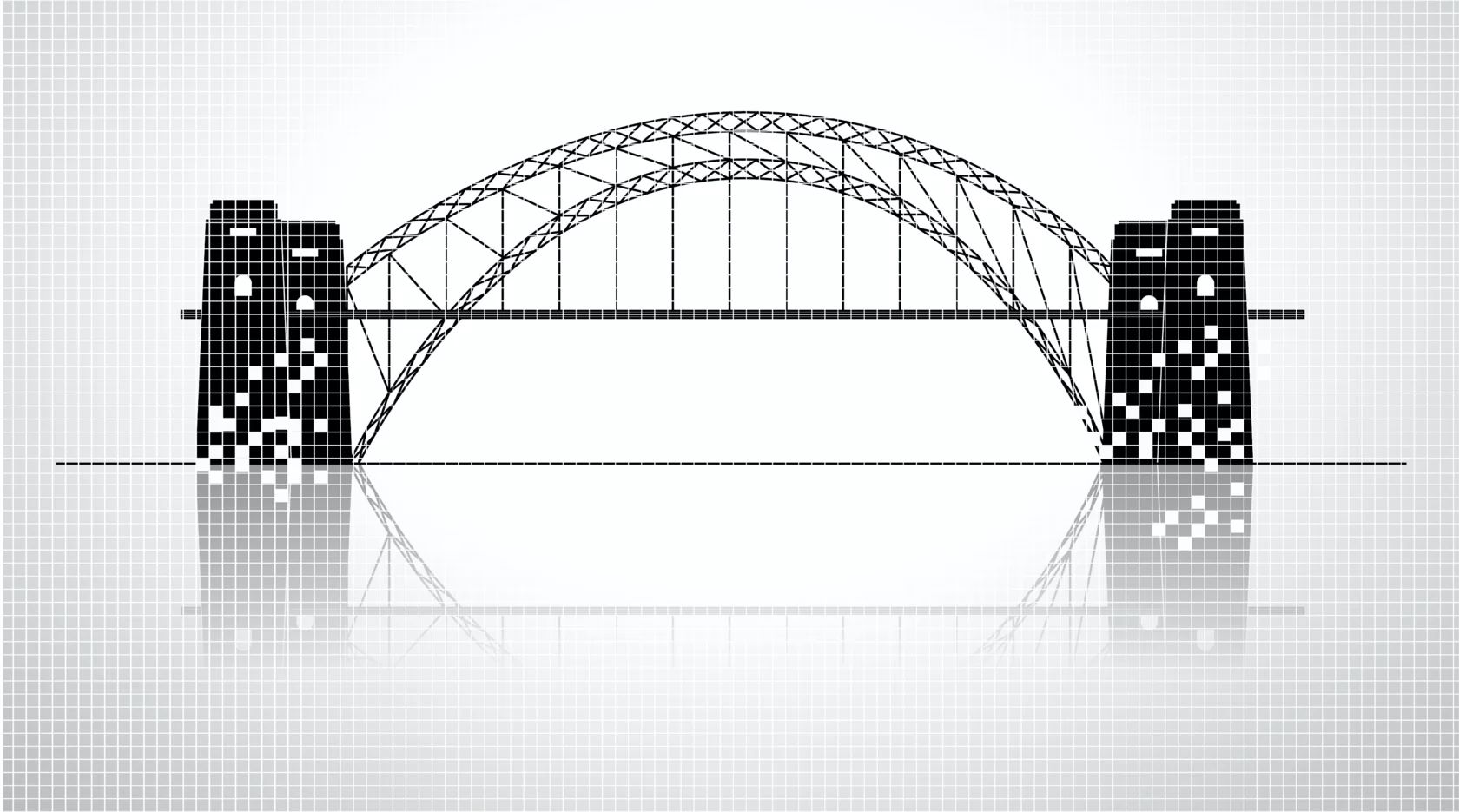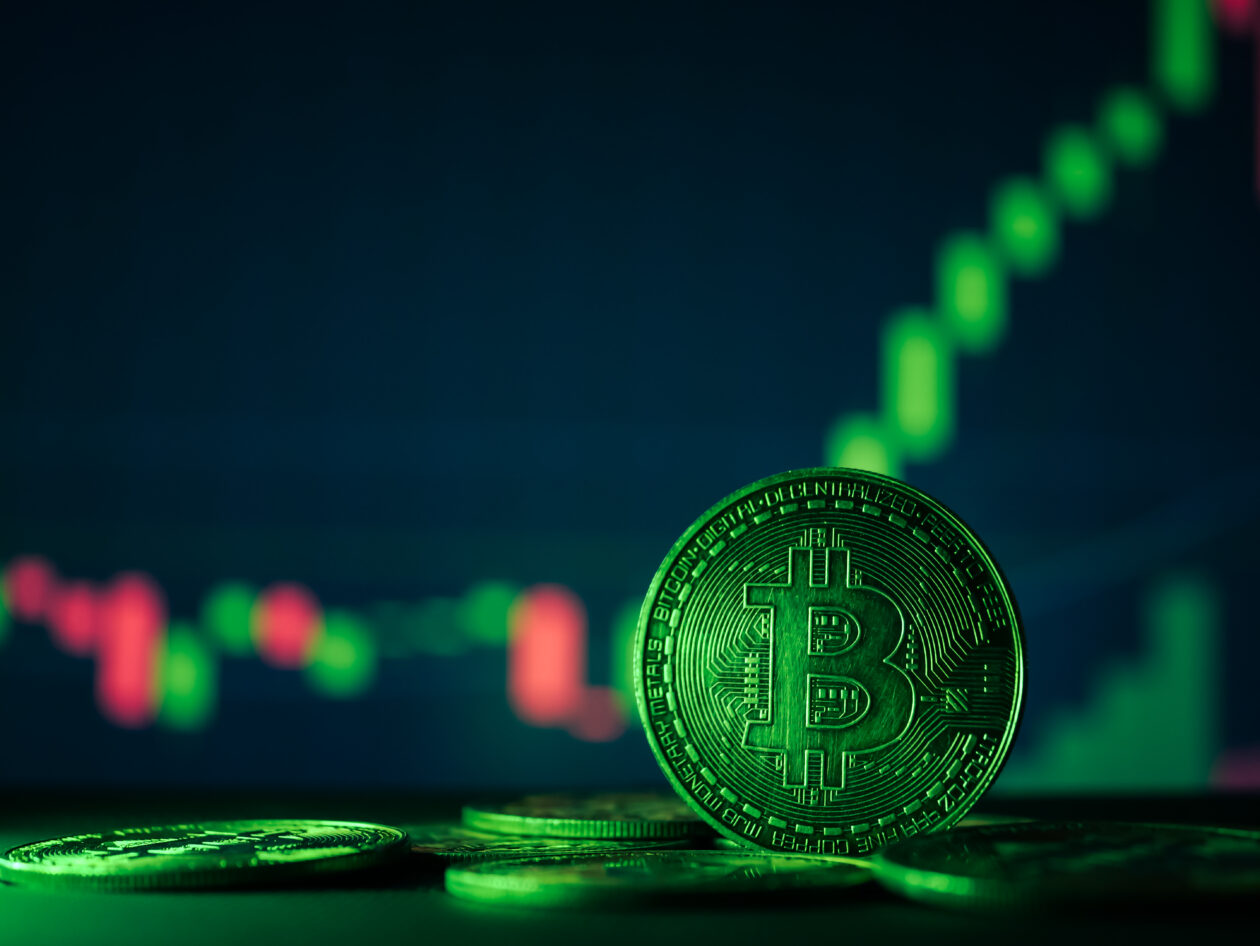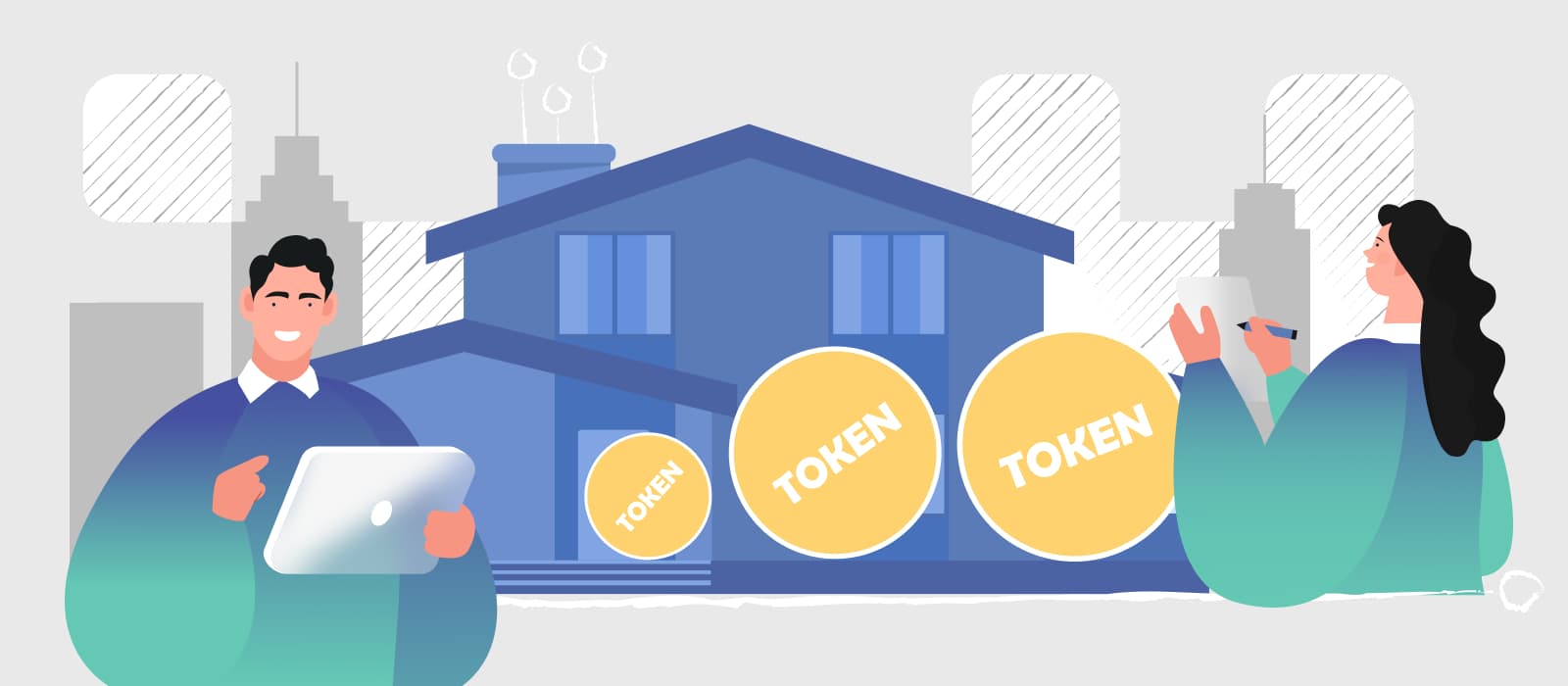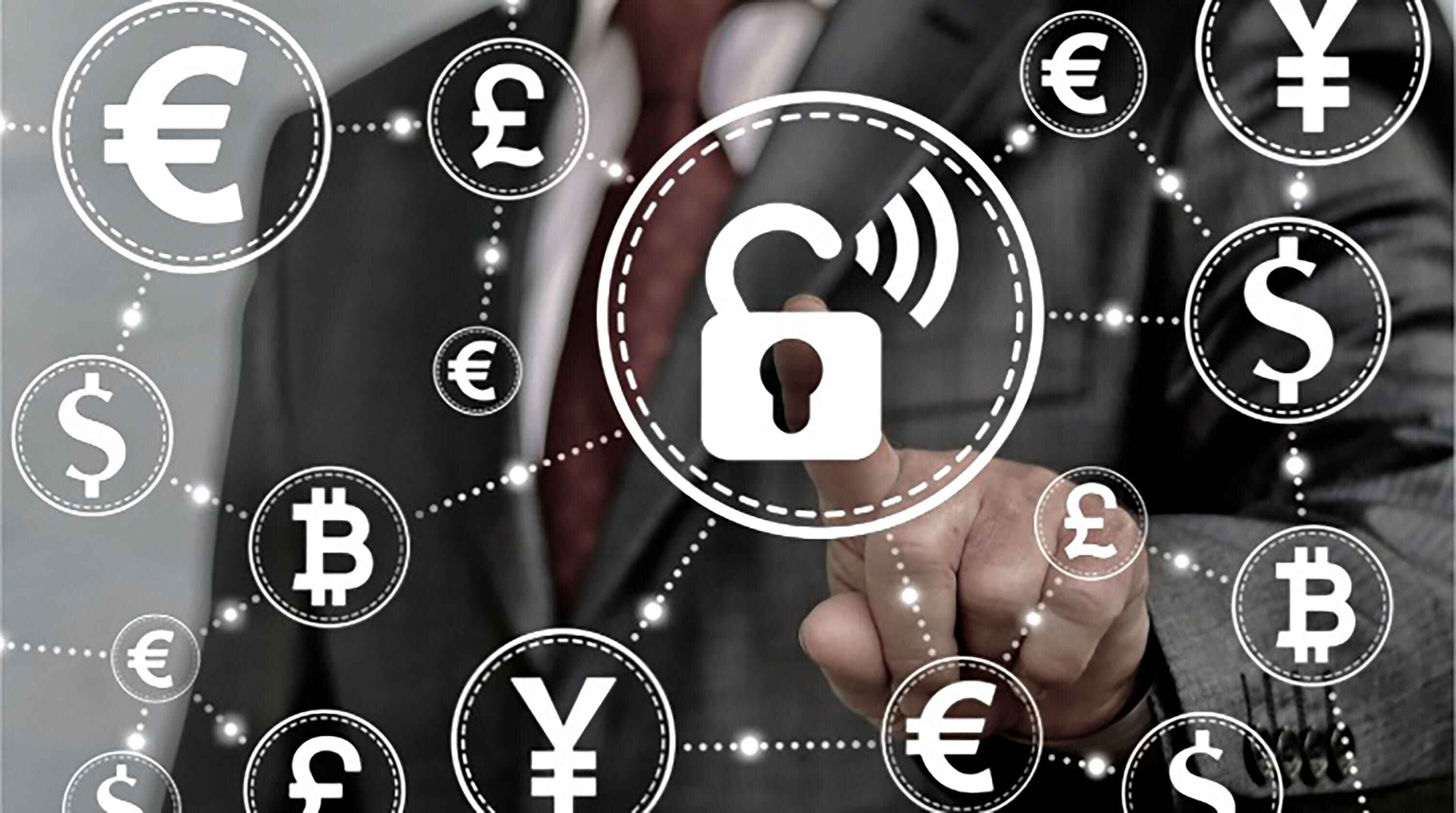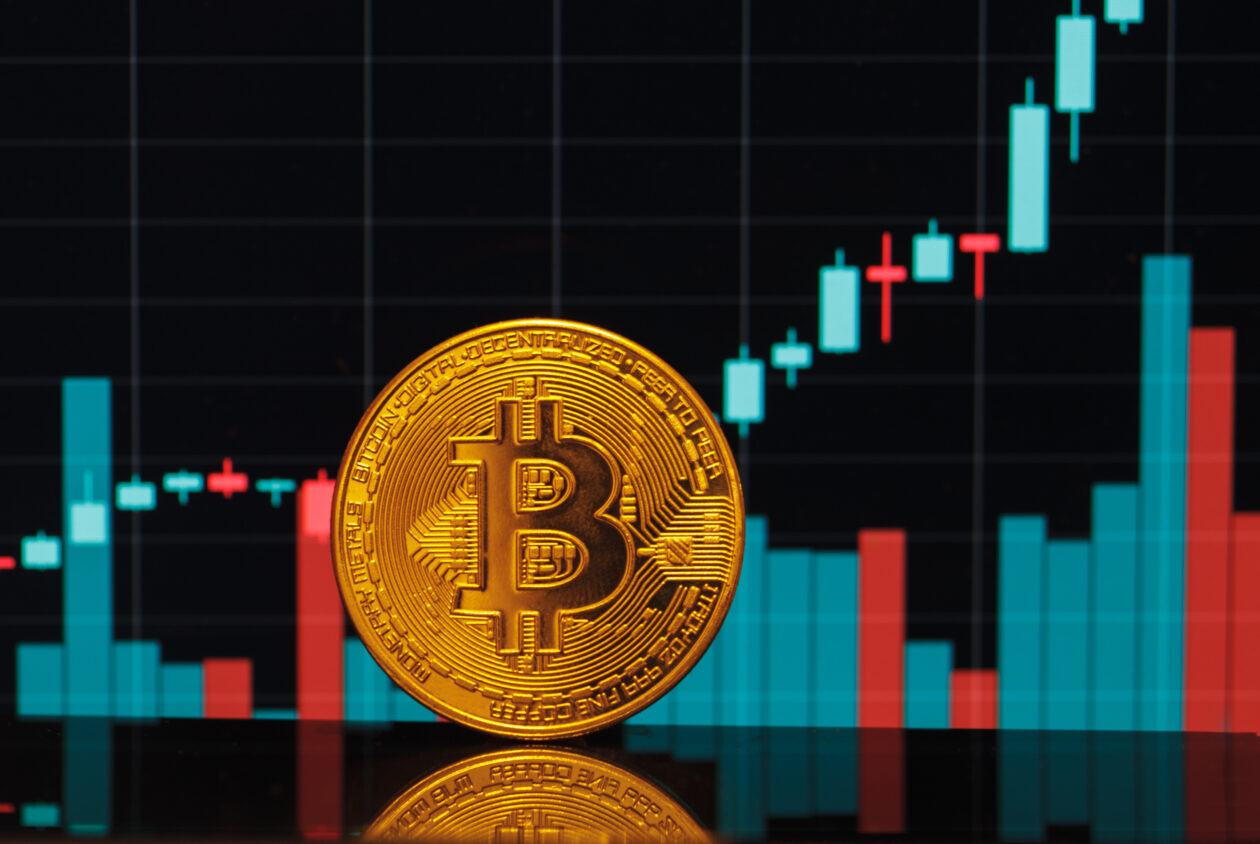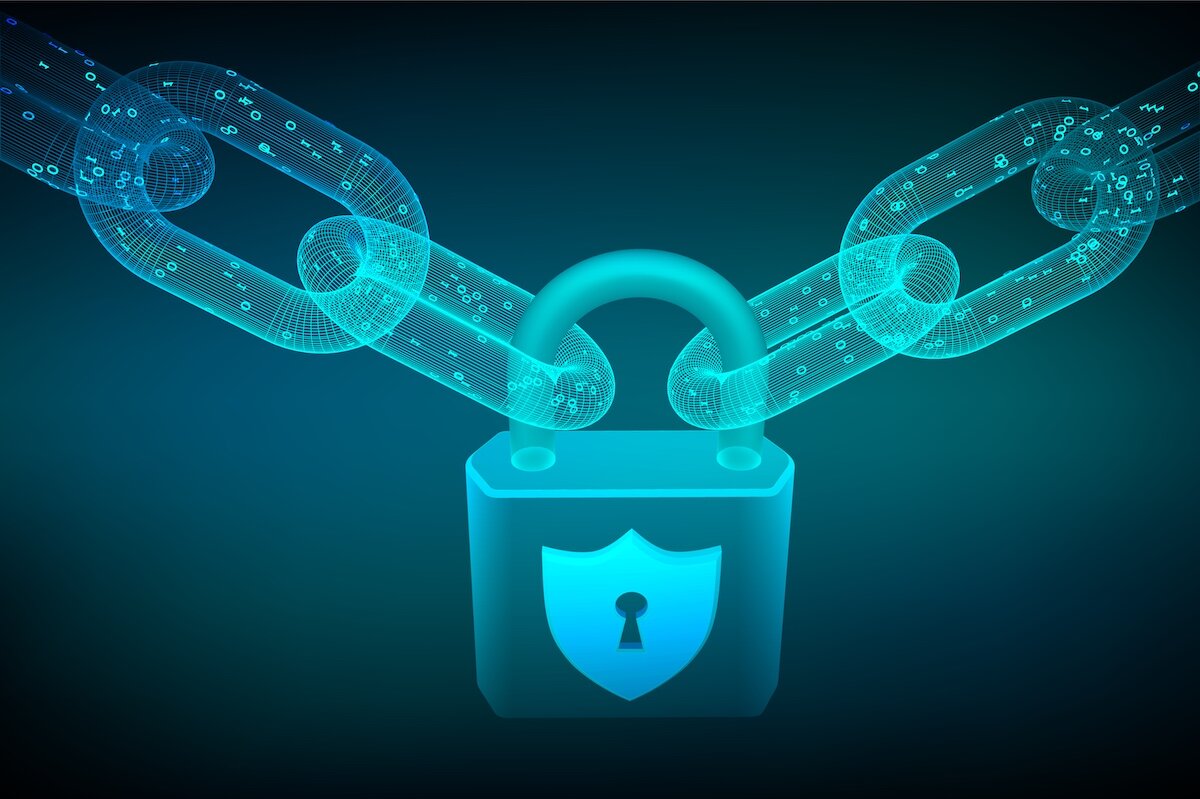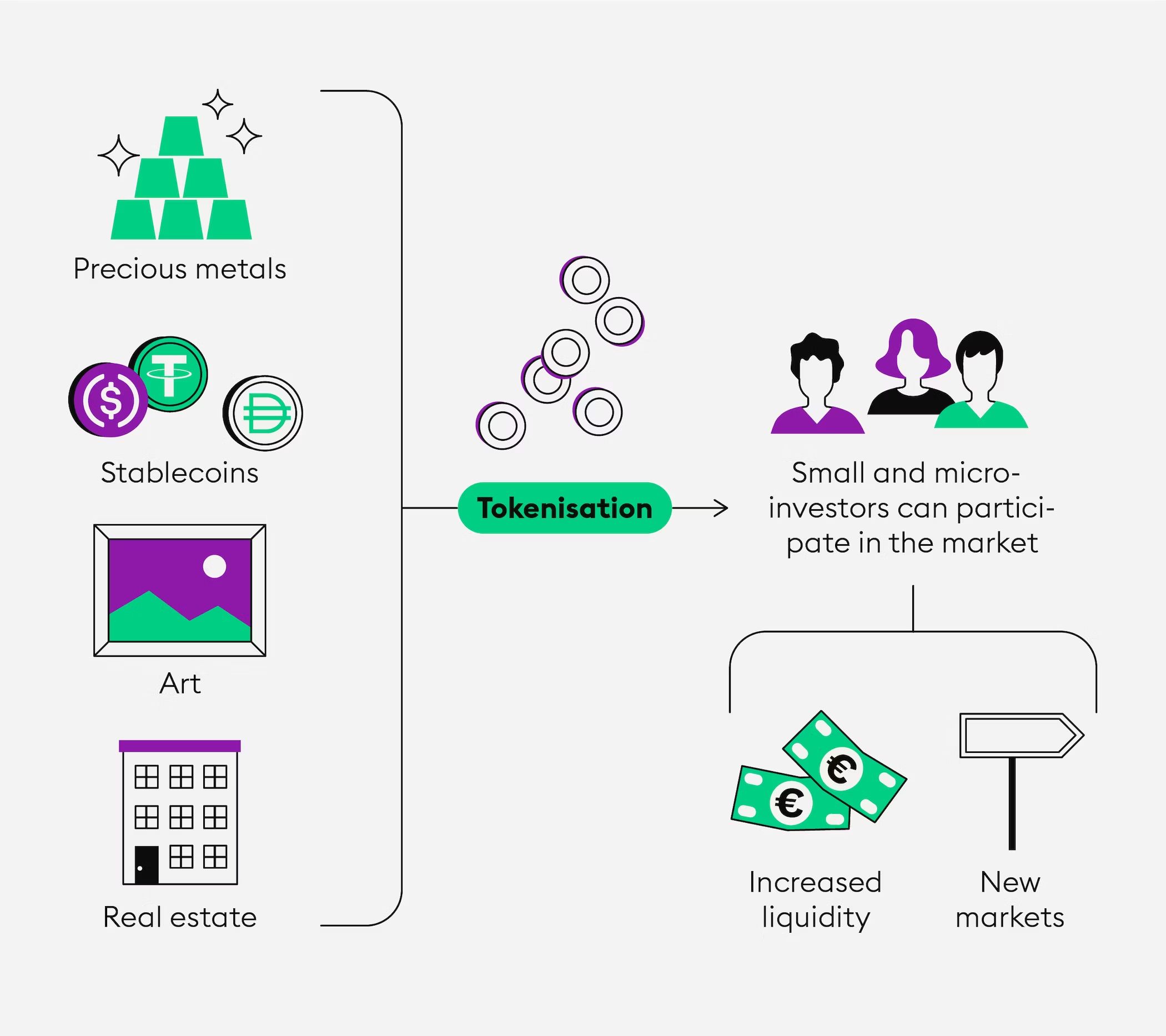Introduction
Welcome to the world of tokenization of assets, where traditional assets are being transformed into digital tokens. In this digital age, the way we perceive and manage assets is constantly evolving. Tokenization is revolutionizing the financial industry by bringing efficiency, accessibility, and innovation to the process of asset ownership and investment.
Tokenization of assets is the process of converting real-world assets, such as real estate properties, artworks, company shares, or even commodities, into digital tokens. These tokens are then recorded and managed on a blockchain or a distributed ledger technology (DLT) platform. This technology allows for fractional ownership, easier transferability, increased liquidity, and more transparent transactions.
The concept of tokenization has gained significant traction in recent years due to its numerous benefits. By transforming assets into tokens, the barriers to entry for investors are significantly reduced. Previously illiquid or inaccessible assets can now be easily divided into smaller portions, allowing individuals to invest with smaller amounts of capital. This democratization of asset ownership opens up new investment opportunities for a broader range of individuals.
Tokenization also offers enhanced security and efficiency. The use of blockchain technology ensures that transactions recorded on the distributed ledger are transparent, immutable, and tamper-proof. This eliminates the need for intermediaries in asset transfers, reducing costs and potential fraud. Additionally, tokenized assets can be traded 24/7, allowing for increased liquidity and faster settlement.
In this article, we will explore the concept of tokenization of assets in more detail. We will discuss the benefits of tokenization, different types of tokenized assets, how the tokenization process works, the importance of security and trust, as well as the challenges and risks involved. We will also provide examples of tokenization in practice to demonstrate its real-world applications.
What is Tokenization of Assets?
Tokenization of assets refers to the process of converting real-world assets into digital tokens that can be recorded and managed on a blockchain or distributed ledger technology (DLT) platform. These tokens represent ownership rights or shares in the underlying asset, and they can be bought, sold, and transferred in a secure and transparent manner.
Traditional asset ownership often comes with several limitations. Assets like real estate properties, artworks, or company shares are typically illiquid and require significant capital to invest. Moreover, the transferability of these assets can be complex and time-consuming, involving intermediaries and extensive paperwork.
Tokenization breaks these barriers by representing the ownership of real-world assets with digital tokens. Each token represents a fraction of the underlying asset, allowing fractional ownership. For example, a real estate property can be tokenized into multiple tokens, and investors can purchase a portion of the property by buying these tokens.
Blockchain and DLT technology play a crucial role in the tokenization process. These distributed networks ensure that every transaction and ownership transfer is transparent, secure, and immutable. The decentralized nature of the blockchain eliminates the need for intermediaries, reducing costs and potential fraud.
Tokenization of assets offers several benefits to both asset owners and investors. For asset owners, tokenization provides increased liquidity for traditionally illiquid assets. It allows them to unlock the value of their assets by dividing them into smaller, tradeable tokens. Additionally, tokenization opens up access to a global pool of investors, breaking geographical boundaries.
For investors, tokenization offers previously inaccessible investment opportunities. Fractional ownership enables even small investors to gain exposure to high-value assets. The transparency of blockchain technology ensures that investors can verify the authenticity and history of the assets they invest in.
Tokenization holds potential beyond just traditional assets. It can also be applied to other forms of value, such as intellectual property, loyalty points, or even carbon credits. The flexibility of tokenization allows for innovative business models and the creation of new asset classes.
In the next section, we will delve into the numerous benefits of tokenization, exploring how it is reshaping the world of finance and asset management.
Benefits of Tokenization
Tokenization of assets brings a multitude of benefits to asset owners, investors, and the financial industry as a whole. Let’s explore some of the key advantages of tokenization:
- Liquidity: Traditional assets such as real estate or fine art are often illiquid, meaning they lack easily accessible markets for buying or selling. Tokenization enables fractional ownership and facilitates the trading of smaller portions of assets, greatly increasing liquidity. Investors can buy and sell tokens without the need for intermediaries, enhancing market efficiency.
- Accessibility: Tokenization lowers the barriers to entry for investing in high-value assets. With fractional ownership, investors can buy tokens representing a small fraction of an asset, making it more affordable and accessible to a broader range of individuals. This democratization of asset ownership opens up investment opportunities and diversification that were previously limited to a select few.
- 24/7 Market: Tokenized assets can be traded 24/7 on blockchain-based platforms, eliminating the restrictions of traditional market hours. This increased liquidity and availability allow for faster settlement and can attract global investors across different time zones, creating a more vibrant marketplace.
- Transparency: The transparency of blockchain technology ensures an immutable and auditable record of transactions. Every transfer of ownership and transaction detail is recorded on the blockchain, providing a transparent and trustworthy system. This transparency reduces the risk of fraud, increases accountability, and builds trust among all participants in the tokenization process.
- Reduced Costs: Tokenization eliminates the need for intermediaries, such as brokers or custodians, in asset transfer and management. This reduction in intermediaries reduces costs associated with transactions and ownership transfers. Additionally, smart contracts, which can be programmed into tokens, automate contract execution, further reducing operational costs.
- Improved Market Efficiency: Tokenization streamlines the process of asset issuance, secondary trading, and post-trade settlement. The use of blockchain technology and smart contracts removes the need for manual verification and reconciliation, reducing the time and cost of executing transactions. This increased efficiency benefits both asset owners and investors.
- Increased Security: Blockchain’s decentralized nature ensures that asset ownership records are stored securely and cannot be altered or tampered with without consensus from the network. Additionally, cryptographic techniques used in blockchain technology protect the privacy and authenticity of transactions, enhancing security throughout the tokenization process.
These benefits of tokenization are reshaping the way assets are owned, managed, and invested in. The potential for increased liquidity, accessibility, and transparency is revolutionizing traditional financial systems and opening up new opportunities for individuals and businesses alike.
Different Types of Tokenized Assets
Tokenization of assets is a versatile concept that can be applied to a wide range of assets, expanding the possibilities for investment and ownership. Here are some examples of different types of assets that can be tokenized:
- Real Estate: One of the most common types of assets that are being tokenized is real estate. Tokenization allows for fractional ownership of properties, enabling investors to own a small portion of high-value properties. This opens up investment opportunities in the real estate market to a wider range of individuals.
- Artworks and Collectibles: Tokenization also offers a new way to invest in artworks, collectibles, and other valuable items. By tokenizing these assets, investors can own a fraction of famous artworks or unique collectibles. This gives art enthusiasts and collectors the opportunity to diversify their holdings and participate in the art market with smaller investments.
- Company Shares: Tokenization has the potential to revolutionize the way ownership of companies is managed. By tokenizing company shares, investors can easily trade and transfer ownership in a secure and transparent manner. This opens up new avenues for early-stage companies seeking funding and liquidity for their shares.
- Commodities: Tokenization can also be applied to commodities such as gold, silver, oil, or agricultural products. Tokenized commodities offer investors the ability to own fractions of these physical assets, providing exposure to the commodities market without the logistical challenges of physical ownership and storage.
- Intellectual Property: Tokenization extends beyond physical assets to include intangible assets like intellectual property. Patents, copyrights, trademarks, and royalties can be tokenized, allowing creators and inventors to monetize their intellectual property and provide investment opportunities for others.
- Debt Instruments: Tokenization can be used to tokenize debt instruments such as bonds or loans. By tokenizing these instruments, issuers can attract a broader investor base, and investors can easily trade and manage debt positions. This increases liquidity and transparency in the debt market.
These are just a few examples of the different types of assets that can be tokenized. The flexibility and versatility of tokenization mean that almost any type of asset can be transformed into a digital token. This opens up a world of opportunities for investors and asset owners, expanding the possibilities for ownership, investment, and diversification.
How does Tokenization of Assets Work?
The tokenization of assets involves several steps and the use of blockchain or distributed ledger technology (DLT). Let’s explore how the process of asset tokenization works:
- Asset Evaluation: The first step in asset tokenization is to evaluate the underlying asset. This involves assessing the value, market demand, and legal considerations associated with the asset. Experts, such as appraisers or legal professionals, may be involved in this evaluation process.
- Asset Segmentation: After the evaluation, the asset is segmented into smaller units or fractions. Each fraction represents a certain portion of the underlying asset. For example, a real estate property can be divided into numerous tokens, with each token representing a fraction of the overall property value.
- Smart Contract Development: Smart contracts are programmable code that define the rules and conditions of the asset ownership and transactions. Smart contracts are deployed on the blockchain platform and govern the transfer and management of the tokens. They ensure that the tokenized asset is traded and operated according to predefined rules.
- Token Creation: Once the smart contract is developed, tokens are created, and each token represents the ownership rights of a specific fraction of the asset. These tokens are generated through the blockchain or DLT platform using cryptographic algorithms ensuring their security and integrity.
- Legal Compliance: Tokenized assets must comply with relevant legal and regulatory requirements. This includes ensuring compliance with securities laws, property rights, and anti-money laundering regulations. Legal professionals are often involved in structuring the tokenization process to ensure compliance.
- Distribution and Trading: Once the tokens are created, they can be distributed and made available for trading on a blockchain-based platform. Investors can purchase these tokens using cryptocurrencies or traditional fiat currencies. The transparent and decentralized nature of blockchain technology enables peer-to-peer trading of tokens, eliminating the need for intermediaries.
- Asset Management: After the tokens are distributed, ongoing asset management is crucial. This includes regular updates on the asset’s performance, distribution of dividends if applicable, and maintaining the legal and financial records related to the asset. Asset managers or token issuers are typically responsible for managing and maintaining the tokenized assets.
The entire process of tokenizing assets is underpinned by the security, transparency, and immutability provided by blockchain or DLT technology. The use of smart contracts automates the execution of transactions, ensuring that the rules and conditions of tokenized asset ownership are enforced.
It’s important to note that the specific details of the tokenization process may vary depending on the asset type, platform, and regulatory framework. However, the fundamental concepts of asset evaluation, segmentation, smart contract development, token creation, legal compliance, distribution, and ongoing asset management are generally applicable to the tokenization of assets.
The Tokenization Process
The tokenization process involves several steps, from the initial asset evaluation to the distribution and trading of the tokens. Let’s dive deeper into the various stages of the tokenization process:
- Asset Evaluation: The process begins with the evaluation of the underlying asset. This step involves assessing the value, market demand, and legal considerations associated with the asset. The asset’s characteristics, such as its liquidity and transferability, are also taken into account.
- Ownership Segmentation: Once the asset is evaluated, it is divided into tradable and transferable units called tokens. Each token represents a specific fraction or ownership stake in the asset. For example, a real estate property can be segmented into multiple tokens, with each token representing a portion of the property’s value.
- Token Creation: Once the asset is segmented, the tokens are created on a blockchain or DLT platform. The tokens are generated through cryptographic algorithms, ensuring their security and authenticity. These tokens are then linked to the underlying asset, representing ownership rights and value.
- Smart Contract Development: Smart contracts are programmable agreements that govern the rules and conditions of the tokenized asset. They are deployed on the blockchain or DLT platform and automate the execution of transactions related to the tokens. Smart contracts ensure transparency and enforce the contractual obligations between token owners and asset issuers.
- Legal Compliance: Ensuring legal compliance is critical in the tokenization process. This includes adhering to securities regulations, property ownership laws, and anti-money laundering measures. Legal professionals play a crucial role in structuring the tokenization process to ensure compliance with applicable laws and regulations.
- Distribution and Trading: Once the tokens are created and legal compliance is ensured, they can be distributed and made available for trading on a blockchain-based platform. Investors can purchase these tokens using cryptocurrencies or fiat currencies, depending on the platform. The decentralized nature of blockchain enables peer-to-peer trading, eliminating the need for intermediaries.
- Asset Management: Ongoing asset management is essential to ensure the smooth functioning of tokenized assets. This includes maintaining accurate records of ownership, tracking the performance of the underlying asset, and distributing any dividends or profits to token holders. Asset managers or token issuers are responsible for overseeing the proper management of the tokenized assets.
The tokenization process leverages blockchain or DLT technology to ensure transparency, security, and efficiency in asset ownership and trading. By dividing assets into tokens, the barriers to entry for investors are reduced, increasing access to previously illiquid assets. Moreover, the use of smart contracts automates transaction execution, streamlining the transfer and management of ownership rights.
It is important to note that while the tokenization process may follow these general steps, the specific details may vary depending on the asset type, platform, and regulatory requirements. Each tokenization project requires careful planning, legal guidance, and adherence to compliance standards to ensure the successful and legally compliant deployment of tokenized assets.
Security and Trust in Tokenization
Security and trust are foundational elements in the tokenization of assets. Blockchain technology, upon which tokenization is built, provides robust security measures and enhances trust in the asset ownership and transaction process. Let’s explore the key aspects of security and trust in tokenization:
Decentralization: Blockchain technology operates on a decentralized network of computers known as nodes. This decentralization ensures that there is no central authority controlling the network, making it difficult for malicious actors to compromise the system. Transactions and ownership records are distributed among multiple nodes, making it highly secure and resistant to tampering.
Immutable and Transparent Ledger: Tokenized assets are recorded on a blockchain or distributed ledger, creating an immutable and transparent record of ownership. Once a transaction is recorded on the blockchain, it cannot be altered. This provides a high level of security and ensures transparency, as the transaction history is visible to all participants in the network.
Cryptographic Security: Cryptography plays a crucial role in securing tokenized assets. Tokens are created using complex cryptographic algorithms that make them virtually impossible to counterfeit. Additionally, private and public key encryption provides secure access to tokenized assets, ensuring that only authorized parties can manage and transfer ownership.
Smart Contracts: Smart contracts are self-executing agreements that automatically enforce the predefined rules and conditions of a tokenized asset. These contracts are deployed on the blockchain and provide an additional layer of security. Once the conditions are met, the smart contract executes the transaction without the need for intermediaries, reducing the risk of fraud or manipulation.
Elimination of Intermediaries: The traditional asset ownership and transfer processes often involve intermediaries, such as brokers or custodians, who add complexity and potential security vulnerabilities. With tokenization, these intermediaries are eliminated or reduced, reducing the risk of human error, fraud, or manipulation. Token transfers occur directly between the parties involved, increasing security and reducing costs.
Regulatory Compliance: Tokenization requires adherence to legal and regulatory frameworks. Complying with securities regulations and other relevant laws ensures that tokenized assets are transparent, compliant, and secure. Legal professionals play a crucial role in ensuring compliance throughout the tokenization process, increasing trust among participants.
By leveraging these security measures, tokenization enhances trust among asset owners, investors, and other stakeholders. The transparency, immutability, and decentralized nature of blockchain technology help to eliminate fraudulent activities, increase accountability, and provide participants with a high level of confidence in the asset ownership and transaction process.
However, it is important to note that despite the robust security measures in place, no system is entirely immune to risk. It is essential to engage in proper due diligence and choose reputable platforms and service providers to mitigate potential security vulnerabilities. Implementing cybersecurity measures, regularly auditing systems, and staying up to date with best practices are all crucial steps to maintain a high level of security and trust in tokenization.
Challenges and Risks of Tokenization
While tokenization offers numerous benefits, it also comes with its own set of challenges and risks. It is important to be aware of these factors to ensure the successful implementation and management of tokenized assets. Let’s explore some of the key challenges and risks associated with tokenization:
Regulatory Compliance: The regulatory landscape surrounding tokenization is still evolving, and compliance requirements can vary across jurisdictions. This presents a challenge as companies and individuals need to navigate complex regulatory frameworks to ensure legal compliance in every aspect of the tokenization process, including issuance, trading, and ownership transfer.
Lack of Standardization: Tokenization is a relatively new field, and there is currently a lack of standardized processes, terminology, and best practices. This lack of standardization can create confusion and inconsistency, making it challenging for participants to navigate the tokenization ecosystem, compare different tokenized assets, and evaluate their risks and benefits.
Market Liquidity: While tokenization increases liquidity for traditionally illiquid assets, market liquidity for tokenized assets can still be a challenge. The demand and trading volume for certain tokenized assets may be limited, making it difficult to sell or buy tokens at desired prices. Liquidity concerns can impact the attractiveness of tokenized assets, especially for investors seeking short-term liquidity.
Cybersecurity Risks: Tokenization relies heavily on blockchain technology, and while it provides enhanced security measures, it is not immune to cybersecurity risks. Cyber attacks, such as hacks or security breaches, pose a significant threat to the security of tokenized assets. Proper cybersecurity measures must be implemented, including robust encryption, secure key management, and regular security audits, to mitigate these risks.
Price Volatility: Cryptocurrencies are often used as a medium of exchange for tokenized assets, and they are known for their price volatility. Fluctuations in the price of cryptocurrencies can impact the value of tokenized assets and introduce additional risks for investors. It is important for participants to be aware of these price fluctuations and consider their potential impact on the overall value of tokenized assets.
Legal and Regulatory Risks: Tokenization introduces legal and regulatory risks, especially when navigating securities laws. Misclassification of tokenized assets as securities or non-compliance with securities regulations can lead to legal consequences, fines, or reputational damage. Engaging legal counsel and compliance experts is crucial to ensure compliance and mitigate these risks.
Token Custody and Security: Proper custody of tokens is vital to protect asset ownership and prevent unauthorized access. Storing private keys securely and implementing robust custody solutions is essential to minimize the risk of theft or loss of tokens. Additionally, ensuring secure authentication and authorization processes is crucial for preventing unauthorized transfers of ownership.
It is important to address these challenges and risks through careful planning, risk assessment, and implementing appropriate strategies. Engaging with experts and experienced professionals in the field of tokenization can help navigate these challenges and ensure a successful and secure tokenization process.
Examples of Tokenization in Practice
Tokenization has gained traction across various industries, and numerous real-world examples highlight its application and potential. Let’s explore some examples of tokenization in practice:
Real Estate: Real estate tokenization allows investors to own fractional shares in a property, enabling access to investment opportunities that were previously inaccessible. For instance, projects like the St. Regis Aspen Resort and the Manhattan Luxury Hotel have been tokenized, enabling investors to participate in the real estate market with smaller investment amounts.
Art and Collectibles: Tokenization has also found its way into the art and collectibles market. Platforms like Maecenas and Masterworks offer tokenized ownership shares in artworks, allowing investors to diversify their art portfolios and benefit from potential appreciation in value. Collectible items like trading cards or rare memorabilia can also be tokenized, enabling fans and collectors to buy and sell fractional shares of these items.
Company Equity: Tokenization is transforming the way ownership in companies is managed. Startups and even traditional companies are exploring tokenizing their shares to facilitate access to capital and enhance liquidity for early-stage investors. The Ethereum-based platform Polymath provides tools for tokenizing securities, enabling companies to comply with regulatory requirements while offering tokenized equity to investors.
Intellectual Property: Tokenization is being applied to intellectual property, allowing creators to monetize their inventions, patents, or copyrights. Blockchain-based platforms enable the tokenization of intellectual property and the creation of marketplaces where investors can buy and sell tokens representing ownership rights in these assets.
Supply Chain: Tokenization plays a vital role in enhancing supply chain efficiency and transparency. With tokenized assets representing physical goods, companies can track and trace products throughout the supply chain, reducing fraud, counterfeiting, and improving accountability. This has applications in industries like food safety, luxury goods, and pharmaceuticals.
Debt and Loans: Tokenization offers new possibilities for debt instruments, such as bonds or loans. By tokenizing these instruments, issuers can attract a wider range of investors and simplify the process of issuing, trading, and managing debt. Platforms like SALT Lending and Celsius Network allow users to tokenize their crypto assets and use them as collateral for loans.
These are just a few examples of how tokenization is being applied across industries. The versatility of tokenization allows for the transformation of various asset classes into digital tokens, increasing liquidity, accessibility, and transparency. As blockchain technology continues to evolve, we can expect to see further adoption of tokenization in an ever-widening range of sectors.
Conclusion
Tokenization of assets has opened up a new world of possibilities in finance and investment. By converting real-world assets into digital tokens and leveraging blockchain technology, tokenization offers increased liquidity, accessibility, and transparency. It provides a more inclusive and efficient way to own, trade, and invest in assets that were traditionally illiquid or inaccessible.
The benefits of tokenization are significant. Fractional ownership allows investors to access high-value assets with smaller investment amounts, democratizing investment opportunities and diversification. The transparency and immutability of blockchain technology enhance trust and reduce fraud, while the elimination of intermediaries reduces costs and streamlines transactions.
However, challenges and risks accompany the implementation of tokenization. Legal and regulatory compliance, lack of standardization, market liquidity concerns, cybersecurity risks, price volatility, and custody issues require careful consideration when embarking on tokenization initiatives.
Despite these challenges, tokenization continues to gain momentum across various industries. Real estate, art, company equity, intellectual property, supply chains, and debt instruments are just a few examples of the diverse applications of tokenization in practice.
As tokenization evolves, it will be crucial to establish best practices, industry standards, and regulatory frameworks to ensure its responsible and sustainable growth. Collaboration between industry stakeholders, legal experts, and technology providers will play a pivotal role in shaping the future of tokenization.
In conclusion, tokenization has the potential to revolutionize the way assets are owned, managed, and invested in. It unlocks new opportunities for investors, enhances market liquidity, and brings efficiency and transparency to the asset ownership process. By addressing the challenges and risks, and embracing the transformative power of tokenization, we can unlock the full potential of this innovative approach to asset ownership and investment.







